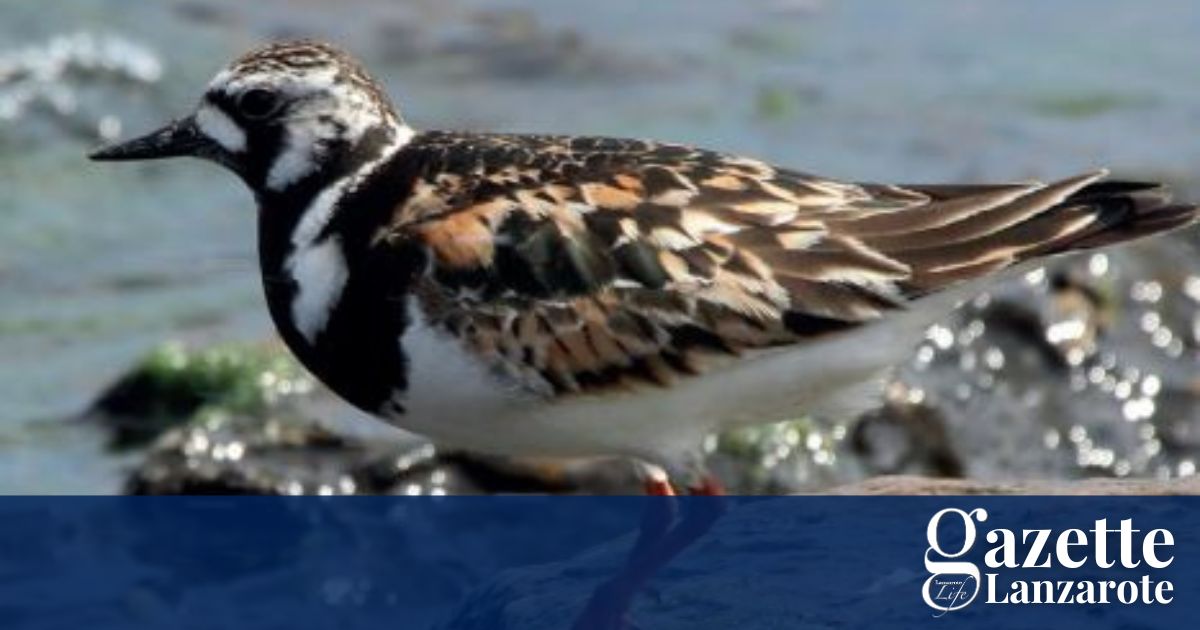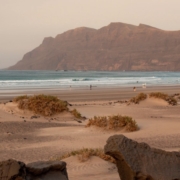Tourists aren’t the only creatures that love Lanzarote’s beaches. You’ll also see several species of birds enjoying some quality time by the seaside.
It’s no surprise that Lanzarote has plenty of shorebirds. The island has 200 kms of coastline, much of it still remote and inaccessible. It has also developed habitats that attract waders, such as the shallow lagoons that feed the salt works on the island.
Most birds steer clear of crowded beaches, but as they empty in the evening, or in the early morning, you may see feathered beachcombers searching the shoreline.
The Kentish Plover, or chorlito negro, is one of the cutest and most beloved local beachcombers, often seen scurrying rapidly along the tide line, pecking at the sandhoppers that are exposed by the retreating waves.
The little plover breeds around this time of year, and recently Playa Honda relocated its San Juan’s day beach bonfire because plover nests had been discovered in the vicinity. However, it’s most favoured breeding area is the abandoned saltworks that are dotted around the island’s shores.
The Kentish plover is one of those birds that distracts predators from its nest by feigning injury. The little bird will flap pitifully away from the nest, hoping to lure a predator away from its eggs or chicks.
The Kentish Plover is the only plover that nests on Lanzarote, but many other species of plover visit the island, especially in winter. They include ringed plover, golden plovers, grey plovers and even the occasional lapwing.

However, the second most well-known beachcombing plover on the island is probably the Turnstone, whose name describes how it find the tiny insects and crustaceans it lives on. With its orange legs and chestnut summer plumage, it’s a common sight on stonier shores, and is often seen in tight little groups.

Other unmistakeable shore birds on Lanzarote include the curlew, whose desolate whistling call is often heard before the bird is seen. However, once you do see the bird, that curving bill makes it unmistakable, unless you’ve come across a rare Glossy Ibis from Africa.

You’ll often see egrets around the island, snowy-white wading birds that often range far inland. Littel egrets are the most common, but great white and cattle egrets can also be found. It can also be surprising to see a stately grey heron fishing in a lagoon.
But these are only a few of the wading species that find their way to Lanzarote. Sandpipers, dunlins, sanderlings, knots, redshanks, whimbrels, and ruffs can also be spotted, and the saltpans at Janubio and Los Cocoteros are among the best places on the island to see them. There’s a chance you’ll see anything from a spoonbill to a flamingo in the large lagoon at Janubio.
The Black Oystercatcher
The fate of the Black oystercatcher is one of the sadder wildlife stories on Lanzarote.
Common black-and-white oystercatchers can still be seen every now and then, but a local variant that was entirely coloured black apart from its red bill was finally declared extinct in 1994 after not being sighted for several decades.

Known locally as the “sea raven” or “sea chough”, the black oystercatcher was well-known to fishermen on Lanzarote, Fuerteventura, and La Graciosa up until the early 20th century. It is theorised that its black colouring evolved to disguise it on Lanzarote’s dark lava shoreline.
The reasons for its extinction are not known, but collection of seafood by humans, predation by rats and cats and the fact that its eggs were considered a delicacy are the most likely causes.











Leave a Reply
Want to join the discussion?Feel free to contribute!